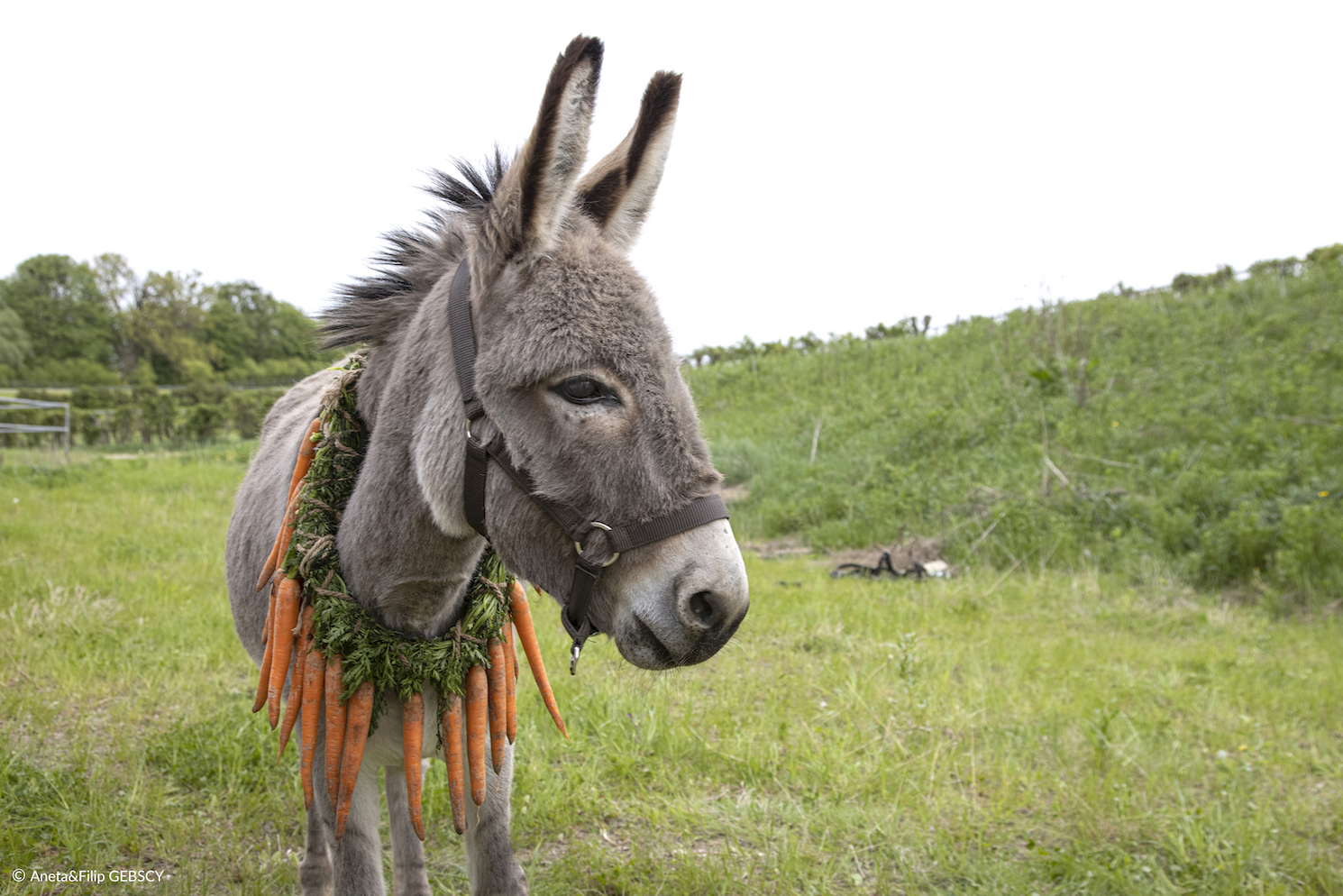Famous Polish director Jerzy Skolimowski’s latest film, EO, sees a wandering donkey move from place to place as the viewer witnesses some of the darkest elements of human nature. The film won Jury Prize Kan, and is now Poland’s official nominee for the Academy Award. In America, the film was picked up by Janus Films, who successfully campaigned Ryusuke Hamaguchi’s Driving My Car to win The best international film of the past year.
“EO” subverts traditional cinematic conventions by filtering its entire runtime through the animal’s perspective. From lewd circus acts to drunken football hooligans, the donkey goes through countless trials and tribulations. In turn, the film provides a poignant reflection on the state of modern humanity.
The main donkey, known as EO, is originally part of a circus act with his kind owner, Cassandra (Sandra Dryzmalska). In the heat of animal rights protests and the reactionary government closing down the Polish circus, EO finds himself torn from his caretaker and thrown into the fray of modern European society.
The donkey faces a journey full of unexpected successes and immeasurable cruelty; he innocently observes the world through his many masters. Skolimovsky was inspired to let a donkey guide his latest film after seeing one in Christmas nativity scene. Among all the animals used in this Sicilian festival, the motionless donkey caught the director’s attention. He was fascinated by the idea that this motionless being was a “watcher from another world” and its eyes reflected “mysterious commentary on the scene around him”. The donkey in this film is a stand-in for the audience, but the story is about the treatment of animals as much as it is about human behavior.
Although the donkey is often seen as boring, it is a cultural symbol that has taken us everywhere from Jerusalem to the Hundred-Blooded Woods. An unremarkable workhorse that has accompanied humanity through centuries of traumatic hardship, the donkey has always been man’s companion and observer. With this in mind, Skolimovsky treats his four-legged hero with increased intimacy and respect.
The camera finds itself attached to the disheveled textures of EO’s anatomy. Every strand of gray and white fur, his two pointed ears and eyes capture the essence of this character. This is particularly effective in the way Skolimowski uses extreme close-ups of the animal’s eyes to convey tacit messages and reflections to the audience. Even the look of an animal can touch the soul. Despite the lack of dialogue or internal monologue from this character’s point of view, every frame of EO in the film makes us fall more in love and attached.
EO explores the world for all its goodness, cruelty and sin. At one point, he joins the electric festivities of a football match, basking in the spotlight as an auspicious mascot. That same night, a rival team – drunk and filled with teenage angst – brutally attacks the donkey. He is crippled while shrouded in the darkness of the night. Beyond this duality of collective satisfaction and selfish anger, EO observes how people struggle to navigate their interpersonal relationships.
After being taken in by a young Italian gambler, he witnesses his new owner and his countess mother, played by legendary French actor Isabelle Huppert, squabble over family and wealth. By removing the human element from the narrative, Skolimovsky enhances the film’s objectivity by filtering his reflection on humanity through the naive eyes of a donkey. As these mundane and formulaic scenes of ecstasy, love, greed and violence are refocused through a different narrative lens, their impact becomes even more significant.
“EO” is a love letter to all animals and a treatise against animal cruelty. From the viewer’s perspective, the film gives agency and dignity to a creature that is often humiliated and marginalized. Donkey’s Eyes is also a way for viewers to reflect on the state of modern European society and humanity in general. This refreshing look at our desires and inhibitions as a species, freed from the human perspective, accurately illustrates the often harsh and melancholy reality that humans have to face.
Contact Mick Gau at arts@nyunews.com.
This story Review: “EO” and the donkey’s odyssey across Europe first appeared on Washington Square News.






.jpg)
